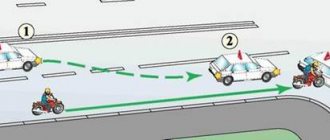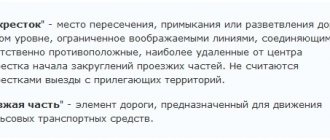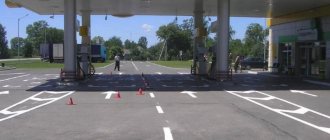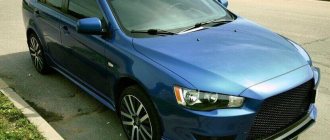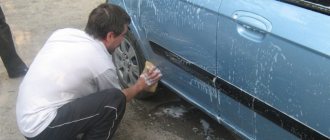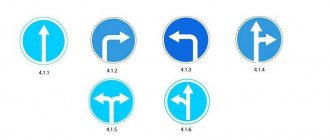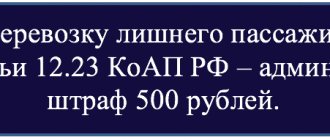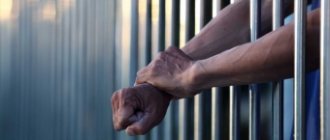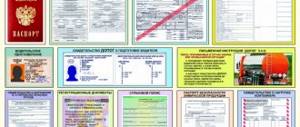basic information
Dear readers! The article talks about typical ways to resolve legal issues, but each case is individual. If you want to find out how to solve your particular problem , contact a consultant:
+7 (499) 938-81-90 (Moscow)
+7 (812) 467-32-77 (Saint Petersburg)
8 (800) 301-79-36 (Regions)
APPLICATIONS AND CALLS ARE ACCEPTED 24/7 and 7 days a week.
It's fast and FREE !
Making a U-turn or turning in the wrong place can cause an accident. After all, traffic rules are written based on logic. In order to increase safety on the road, there was a regulation on the optimal behavior of drivers. Signs stating prohibitions were hung up for them, and markings were also drawn. Unfortunately, this did not help to reach the point where everyone would drive according to the rules.
Single markings are applied to the roadway where there are two lanes. As with the double solid, neither a turn nor a turn is allowed here. Double solid is applied with 4 or more stripes. When crossing, the driver finds himself in the oncoming lane, which will allow an accident to occur with unpredictable consequences.
No U-turn signs
Traffic regulations provide for many situations in which a motorist is prohibited from turning the car around. At the same time, the presence of sign 3.19 “No U-turn” is just one of them. Typically, this sign is placed at road intersections where a U-turn could be dangerous for vehicles coming from other directions, as well as for people walking. At the same time, motorists need to remember that the “No U-turn” sign does not at all prevent traffic in other directions, including turning left.
To improve the awareness of a motorist preparing for a maneuver, a “No U-turn” sign can be installed on both sides of the road, as well as above the leftmost lane and even on the median strip.
Sign 3.19 is allowed to be installed in combination with plate 8.1.1 “Distance to object”. This combination means that the ban will apply in the zone starting after the specified distance. Thanks to the warning, a motorist intending to make a U-turn can decide in advance to change direction.
The driver can also judge that a U-turn is prohibited by the presence of other signs. Road signs in the area of which it is prohibited to turn around include:
- 5.19.1 and 5.19.2 “Pedestrian crossing”;
- 1.31 "Tunnel";
- 1.3.1 “Single-track railway” and 1.3.2 “Multi-track railway”;
- 1.11.1 and 1.11.2 “Dangerous turn”;
- 1.12.1 and 1.12.2 “Dangerous turns”;
- 1.13 “Steep descent” and 1.14 “Steep ascent”;
- 5.16 “Bus and (or) trolleybus stopping place”;
- 5.17 “Tram stopping place”;
- 4.1.1 “Move straight”;
- 4.1.2 “Move to the right”;
- 4.1.4 “Move straight and to the right.”
In addition, the prohibition to turn around is indicated by the following markings:
- 1.2.1 “Solid line”;
- 1.3 "Double solid".
Legislation
The behavior of all road users is regulated by signs, markings and special plates. Failure to comply with them threatens the violator with a fine or other consequences prescribed in the Code of Administrative Offenses of Russia dated December 30, 2001.
All offenses relating to crossing the marking line or violating the rules of turning are described in articles 12.15 and 12.16.
In connection with the new introductions, the driver now has the right to pay a fine with a 50% discount. This is regulated by Article 32.2 of this legal act. But the payment action must be completed within the first 20 days.
Types of road signs
The traffic rules contain all the signs and marking lines that every driver should know. He passes the exam on knowledge of this document in accordance with all standards. A person sees signs every day, and this allows him to perform actions automatically. But some signs are extremely rare, and in such a situation a citizen may forget.
The “Lane Drive” sign is used quite rarely.
And there are a number of reasons for this action:
- often signs on the road are replaced by markings;
- Even if the sign is placed, the driver cannot, due to circumstances, drive the car in accordance with the rules.
But if there is a sign, then it is better not to break it and follow the traffic rules. Otherwise, you may receive a fine for misconduct.
All road signs can be divided into several categories:
- guides in accordance with the stripes. Often written on a canvas with an uneven number of stripes. They always go in different directions;
- guides along a specific strip. They indicate to the driver how to move on a given section of the road;
- reflective ones are designed to rotate. Often mounted as a warning sign at intersections or in advance of them;
- definitions that allow you to see where the strip begins and ends;
- fixing. Often this sign restricts the movement of a specific vehicle. Often accompanied by a certain speed limit.
How to make a left turn
Rules for driving through unregulated intersections
Driving through intersections according to traffic rules 2021 with a left turn is more difficult compared to the right turn described above, but drivers have to make it no less often. Let's consider several traffic situations in which motorists have to make a left turn. The easiest way is to make a left turn at a traffic light. You simply wait for the green light to clear the maneuver and execute it.
Left turn from a minor road
According to traffic rules, a left turn from a secondary road requires the presence of a Give Way sign in front of the intersection. Consequently, the driver must first let all traffic participants moving along the main road pass, and only after that make a maneuver.
Moving along his lane and seeing a sign ahead to give way, the driver needs to think through the maneuver several steps ahead. If there are no obstacles, you can turn without stopping, slowing down a little. If there is interference, first wait for the lanes to clear and proceed with the maneuver.
When there is a STOP sign in front of an intersection, you will definitely need to stop before making a maneuver - this is a traffic requirement. If there is a stop line, you need to stop in front of it, and without it, the stop is made before the intersection of lanes, that is, at the intersection itself.
When approaching an intersection, watch your trajectory. Don't "take the radius" by first moving to the right before executing the maneuver and then making a left turn. This is a fairly common mistake among beginners that leads to emergency situations.
Left turn with additional traffic light section
Trajectories for left turns
If a traffic light has an extra section, it makes it easier to maneuver at an intersection. This section allows or prohibits the driver from making a left turn in accordance with traffic regulations. The main thing to remember is that the main signal is a priority, that is, if the auxiliary arrow lights up along with the main green one, it acts as a sign of the main road. If the auxiliary arrow lights up along with the main red one, evaluate it as a Give Way sign. Oncoming cars making a right turn or driving straight will have the right of way and you will need to give them way.
Equivalent intersection and left turn
When driving through an equivalent intersection with a left turn, the driver needs to give way to oncoming cars moving on the right. When you are about to make a left turn and a car is driving in a parallel lane, do not rush into the center, as another obstacle may arise while waiting for it to pass. In this regard, experienced motorists advise beginners to stand at such intersections at the line of intersection of lanes, allowing oncoming traffic to pass.
At equivalent intersections, 4 cars can meet at once, coming from different directions. They all probably need to make a left turn. Of course, such a situation is rare, but it is better to know the traffic rules. In this case, drivers must figure out among themselves who will pass first, and the rest will act according to the obstacle on the right.
Sanctions for breaking the rules
If traffic rules are violated, the driver is issued a fine. At the moment, the sanction is expressed in monetary terms.
If a person drives into the oncoming lane or moves along it, he can receive a fine or lose his right to drive a car. In accordance with Article 12.16 of the Administrative Code, it is possible to apply only a fine for violating a specific marking sign or restriction.
A turn or turn is often interpreted as a violation of marking requirements. And because of this, the citizen is assessed a fine of 1,500 rubles. The person will not lose his driver's license.
If there was a circumstance to perform the action, for example, an accident, then the driver will be punished with a more stringent obligation. The amount of the sanction will be 5,000 rubles, which increases the original fine by almost 3.5 times, and will also result in the loss of a driver’s license for up to six months.
If a person constantly violates the marking line, and the traffic police officers have already issued a fine, the penalty will not be increased.
The fine will depend on several factors:
- to the left under the sign go straight ahead only;
- without arrow;
- from the second row;
- through a double solid line;
- out of your lane.
The fine will depend on the specific circumstances that occurred.
In particular:
- driving along the dividing strip, which is located between two – 500 rubles;
- if the turn signal is turned off and the lane is changed incorrectly – 500 rubles;
- when turning from the wrong lane - 1,500 rubles;
- driving into oncoming traffic – 1500 rubles. If this is overtaking by crossing a solid line - 5,000 rubles;
- when traveling on tram tracks – 2500 rubles;
- for a bicycle path – 2500 rubles.
For megacities, these sanctions are doubled.
What is an intersection and how to make a U-turn at it
Traffic regulations on this matter will scare you with the following wording, which is difficult to understand right away.
“Intersection” is a place where roads intersect, adjoin or branch at the same level, limited by imaginary lines connecting, respectively, the opposite, most distant from the center of the intersection, beginnings of curvatures of roadways. Exits from adjacent areas are not considered intersections.
If you try to explain it more simply, in your own words, then an intersection is actually an area of the road limited by imaginary lines drawn from the turning corners, perpendicular to the roadway. As a rule, this is an area in the form of a square...
…the intersection is shown in brown in the picture above. If we take the curves into account, the intersection area might look like this.
So, after we have figured out what an intersection is, let’s move on to how you can and should turn around at it. Conventionally, intersections can be divided into two types. So in one case, the dividing strip of oncoming directions is a marking line several centimeters wide, if it is marking 1.1. And sometimes it can be several meters, if it is a lawn, a bumper or something similar. The fundamental difference in both cases is the fact that the dividing strip for marking will be one intersection of perpendicular roadways. And in the case of a dividing strip in the form of a lawn, perpendicular roadways have two intersections. Moreover, each of these options will have its own reversal rules, which we will discuss further.
Failure to pay a fine for a turn - consequences
Every driver who has been issued a fine for turning can challenge this action. The law gives 10 days for such action after the decision is made. During this period, the citizen receives a decision to collect a fine, and then tries to sort it out for another 60 days.
If he agrees with the sanctions, then 70 days are given for payment from the date of the decision. It is worth remembering that in case of violation, the court will not side with the applicant. But if there really was no offense and the claim was drawn up correctly, then the chances of winning increase somewhat.
It will not be possible not to pay the sanction. After all, it is still necessary to pay off the debt. The payment deadline is 2 months, after which the case is transferred to the bailiffs. They collect the debt on the basis of enforcement proceedings and the sale of the debtor’s property.
But first, the court simply increases penalties for an incorrect turn.
If such an action does not affect the debtor, then the court, in accordance with current legislation, will allow the use of one of the methods:
- arrest of a citizen for 15 days;
- seizure of the debtor's property;
- involvement in forced labor for a certain period of time;
- withhold earnings as repayment of debt obligations;
- prohibit travel outside the Russian Federation;
- pick up your driver's license.
Such sanctions are applied in the most difficult cases, when the owner owes a sufficiently large amount of money.
Fast repayment is encouraged
The fine for turning can be paid with a 50% discount. In 2021, there is a rule at the legislative level that if a person pays the sanction in the next 20 days after the ruling is issued, then a reduction in cost is available to him.
To understand when this discount is valid, it is better to use the State Services portal or the Sberbank online service. It is these sites that allow you to pay and check fines without leaving your home. Moreover, it is possible to connect SMS notifications about the receipt of new fines, as well as indicate an email.
The exception to the rule is serious offenses for which a discount cannot be provided. These situations can always be found at the traffic police department.
Circumstances predisposing to violation
An incorrect turn can be provoked by a citizen’s untimely reaction or simply ignorance of the city where he is currently driving. When realizing the situation, many drivers do not want to waste time waiting and commit an offense.
This behavior indicates the driver is distracted and lacks attention. To turn, he must prepare and change lanes in advance. In addition, in this way it creates an emergency situation.
Many people are confused on the road if there are tram tracks. This situation is also spelled out in the Traffic Rules. If there is a traffic light, then the turn is made from the extreme left position. If there is no traffic light, then a turn is made from the passing traffic.
In many situations, traffic flow is controlled by appropriate road signs. If they exist, then you need to be guided by them.
Is it possible to get ahead at a pedestrian crossing?
When performing a maneuver, there should be no danger to traffic or interference with other road users. The signal for a left turn (turn) corresponds to the left arm extended to the sides or the right arm extended to the side and bent at the elbow at a right angle upward. The right turn signal corresponds to the right arm extended to the side or the left arm extended to the side and bent at the elbow at a right angle upward. The brake signal is given by raising your left or right hand.
8.2. The turn signal or hand signal must be given well in advance of the maneuver and cease immediately after completion (the hand signal may be terminated immediately before the maneuver). In this case, the signal should not mislead other road users.
Signaling does not give the driver an advantage or relieve him from taking precautions.
8.3. When entering the road from the adjacent territory, the driver must give way to vehicles and pedestrians moving along it, and when leaving the road - to pedestrians and cyclists whose movement path he crosses.
8.4. When changing lanes, the driver must give way to vehicles moving in the same direction without changing direction. When simultaneously changing lanes of vehicles moving in the same direction, the driver must give way to the vehicle on the right.
8.5. Before turning right, left or making a U-turn, the driver is obliged to take in advance the appropriate extreme position on the roadway intended for traffic in this direction, except in cases where a turn is made when entering an intersection where a roundabout is organized. If there are tram tracks in the same direction on the left, located at the same level as the roadway, a left turn and a U-turn must be made from them, unless signs 5.15.1 or 5.15.2 or markings 1.18 prescribe a different movement order. In this case, there should be no interference with the tram.
8.6. The turn must be carried out in such a way that when leaving the intersection of roadways the vehicle does not end up on the side of oncoming traffic. When turning right, the vehicle should move as close as possible to the right edge of the roadway.
8.7. If a vehicle, due to its size or for other reasons, cannot make a turn in compliance with the requirements of paragraph 8.5 of the Rules, it is allowed to retreat from them provided that traffic safety is ensured and if this does not interfere with other vehicles.
8.8. When turning left or making a U-turn outside an intersection, the driver of a trackless vehicle must give way to oncoming vehicles and a tram in the same direction. If, when turning outside an intersection, the width of the roadway is not sufficient to perform the maneuver from the extreme left position, it is allowed to be made from the right edge of the roadway (from the right shoulder). In this case, the driver must give way to passing and oncoming vehicles.
8.9. In cases where the trajectories of vehicles intersect, and the order of passage is not specified by the Rules, the driver to whom the vehicle is approaching from the right must give way.
8.10. If there is a braking lane, the driver intending to turn must change lanes in a timely manner and reduce speed only in this lane. If there is an acceleration lane at the entrance to the road, the driver must move on it and change lanes into the adjacent lane, giving way to vehicles moving along this road.
8.11. U-turn is prohibited:
- at pedestrian crossings;
- in tunnels;
- on bridges, overpasses, overpasses and under them;
- at railway crossings;
- in places where visibility of the road in at least one direction is less than 100 m;
- in places where route vehicles stop.
8.12. Reversing a vehicle is permitted provided that this maneuver is safe and does not interfere with other road users. If necessary, the driver must seek the help of others. Reversing is prohibited at intersections and in places where turning around is prohibited in accordance with paragraph 8.11 of the Rules.
Exception
Every citizen now knows what the fine for turning is. But there are also limitations and exceptions to the rules. As an example, consider a real-life incident. It can be considered the only exception to the rule.
It represents a case where the lanes on the territory are not marked in any way. If there are no markings on the road, then, according to the rules, priority should be given to the signs. In other words, if a turn is made outside of one’s lane, but there are no markings or signs, then all penalties for turning in the wrong place will be removed from the person. The only fine you will have to pay is for violating the rules of stopping at an intersection. But this fact is also quite difficult to prove.
Every driver of a vehicle can receive a fine for making an incorrect turn or U-turn. Now photo and video cameras are being installed for this purpose. And habitual violators will now receive fines constantly.
